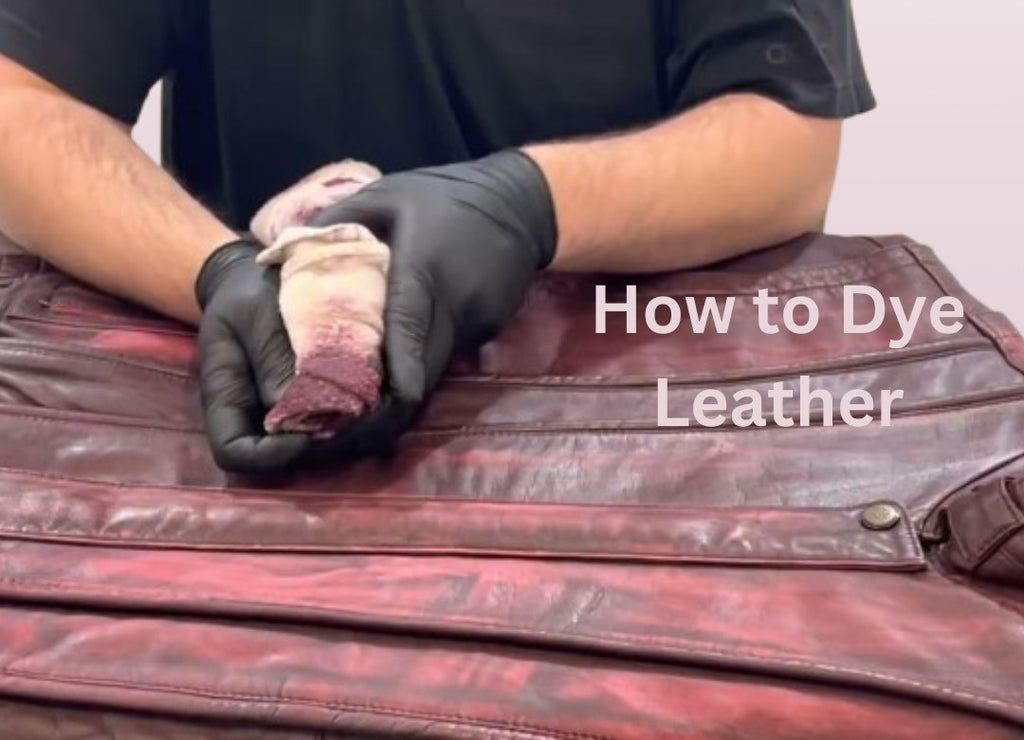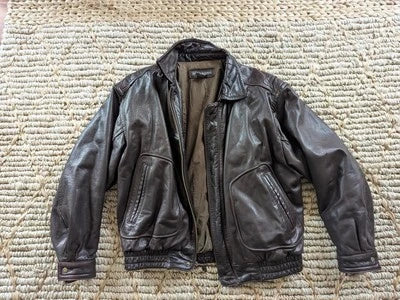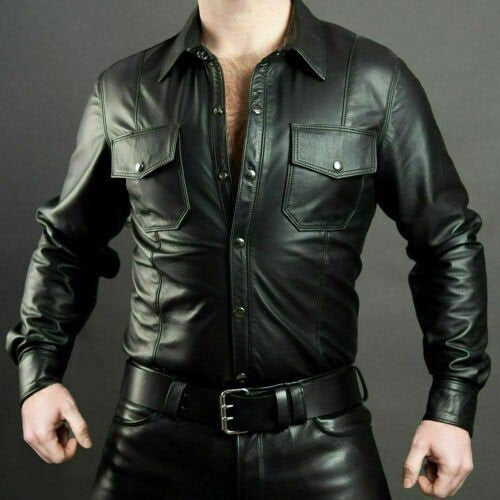How to Dye Leather in 7 Effective Steps
It will be a fun activity to dye your faded leather at home. But things can go wrong. Many people fail to achieve finished looks. If you are dying for the first time, you need to be very careful. Because if you don't take appropriate steps, your leather will get an uneven and patchy look.
Are you worried about the colour of your leather because it is starting to fade and you are not sure how to dye leather to bring it back to colors? Don't worry, because you don't have to be a pro for this. You just need the right information to make your old leather into a brand new look.
In this article, you will learn how to dye leather in 7 easy ways. We will cover everything you need to know to give your leather a new look from getting it ready to the last coat. Are you ready to start? Lets get started!
What is Leather Dyeing?
Leather dying is an old way to bring a new look to leather things such as your favorite shoes, handbags and sofa. You can say you are going to transform your old leather into a new one. This process gives it a new and fresh look to your leather.
A special dye is used to change the colour of the leather to keep its texture original. This procedure not only to change the color of leather but is also a way to show how creative you are. Leather dyeing is not new. Our ancestors used plants, bark, and berries to colour their leather goods. It has changed over time. Day by day new methods have been explored and getting better.
Why Consider Dyeing Leather?
You can give your favourite leather goods a new look by dyeing them. This step makes them last longer and reduces waste by dying them. This is a small but important step towards a more styled life.
Dyeing leather makes your things unique by giving them a personal touch that shows off your creativity. You are no longer limited to colours that come from the supplier. If you learn this skill, you are able to do anything you want with your favourite leather goods.
Dyieng leather might seem tough at first, but once you have mastery over it, you can be proud of each piece you paint because it shows how creative and skilled you are. Learning how to dye
leather and appreciating its beauty is a hobby too that will change you as well as your leather goods.
How to dye leather: Required Tools and Materials
It is important to make sure we have all the tools and things we need before we start. Organization of tools is very important. If we check that we have all the required tools before starting the process, it will be very helpful because it will ensure fewer chances of interruption in the process. The right tools can mean the difference between great work and a mess.
1. List of Essential Tools for Leather Dyeing
We are sharing a list of leather dyeing tools that you need during the process. The knowledge of tools is compulsory before learning how to dye leather.
- Paints and dyes
- Water-based
- Solvent-based.
- Scrub brushes and sponges
The next most important thing is scrub brushes and sponges. Because your hard work mostly depends on the brush you use. Small, round brushes work best because they help you get into hard-to-reach places and spread the dye more nicely. On the other hand, daubers work great on bigger areas and can really speed up the process.
- Cleaning Things
Your leather item must be cleaned properly before dyeing. If there is any stain or dust on your leather object, it gives you a patchy look. You must need:
- Gloves
- Get a soft brush.
- Clean clothes
- Light soap or leather cleaner.
2. Choosing the Right Leather Dye
In this process, the most important part is to choose the right leather dye.
- Things to Consider When Buying a Dye
- What brands or types are best?
High quality leather dyes can be found in names like Fiebing's, Angelus, and Tandy Leather. This water-based dye from Fiebing is a great place to start if this is your first time. Their colour choice is good and it is easy to apply.

How to Dye Leather in 7 Effective Steps
Now it's time to learn how to dye leather in 7 easy steps. Follow these steps to dye leather.
Step 1: Organise the setup
- You need a big table if you are at home.
- Keep the window open and switch on the fan to avoid the smell.
- The temperature should be about 70 degrees Fahrenheit
- You should cut a big trash bag and put it on the surface to protect the floor.
- Choose a warm day for this activity if you are planning to do it outside from the home.
- Spread the towels on the floor and wear gloves.
Step 2: Use your deglaze
Use deglaze with a clean cloth. This will remove the seal from your leather and make it easier for the fibers to take in the dye. First, remove all the stuff and laces inside of the leather shoes to keep them dry.
Step 3: Spray water on the leather
A little water on the leather's surface allows the dye to soak into the leather equally.
Step 4: Apply the first coating
- Paint the edges of your leather with a paint brush that has a little dye on it.
- Fill in the rest of the area with a cotton ball or sponge.
- Brush strokes can be hard to hide. Apply dye with cotton buds and move them in a circle.
Step 5: Dry it
Leather dries differently. It depends on its type. Some leather takes one day to completely dry.
Step 6: Apply Coat
- Apply other layers of dye when it gets dry. .
- You can add three layers if necessary.
- You can add more layers until you get the colour you want.
Step 7: Use leather shiner
- You can use a leather polisher.
- You can also shine the surface with a cloth to clean it.
- After drying, clean your work area.

Different types of Leather Dyes
Before learning how to dye leather, it is important to know about different kinds of leather dyes. This knowledge gives you an idea about which type of leather is made for what type of leather dye. Some of them are listed below:
-
Shoe Polish
This is not the right way to colour leather but is acceptable. It is quick to use but it does not stay on leather for a long time.
-
Alcohol-based leather colour
-
Resin
-
The Sun
-
Oil-based leather colour
-
Water-Based Colour
-
Acrylic Resolene
Safety Measures for Leather Dyeing
Now that you have learned how to dye leather, there are a few safety measures you can take.
Importance of Safety in Leather Dyeing
Why safety is necessary because:
- You should be careful when dyeing with oil-based colour on leather because it contains different chemicals.
- You could get health problems ranging from minor irritation to serious allergic reactions if you breathe in or touch your skin with these hands,
- Regular use of chemicals without taking the right safety precautions could cause health problems like breathing and skin problems.
Safety Precautions
- You must wear rubber gloves.
- A respirator mask can also be very helpful if you are using a dye that gives off strong smells.
- Make sure you are working in a room with good airflow.
- There should be quick access to water to clean up any spills.
- Do not let children or dogs get to your dyeing supplies.
- Before you start, you should always check your space again for possible dangers and when you are finished, you should clean up completely.
It is very important to take care of your health. Learning how to dye leather alone is not enough. You must ensure that your leatherworking journey is not only creative but also safe by being aware of the possible dangers and learning how to create a safe workspace.
Maintaining Your Dyed Leather Products
The second most important thing after learning how to dye leather is maintaining your dyed leather products.
- Taking good care of your dyed leather regularly will help it stay bright.
- A mild leather cleaner can do great things for spots that will not come out.
- A good leather conditioner will keep your dyed leather soft and stop it from cracking.
- You can give your leather new life by dying it again.
- Leather repairing kits can save the day if your clothes get scratched or cut. Pick out a kit that goes with the coloured leather and carefully follow the directions. Your leather will look brand new again.
Common Mistakes and How to Avoid Them
Learning how to dye leather is easy but sometimes we make some common mistakes. so, here are some ways to avoid them.
- If you add an excess dye coating to make the colour stronger, it will lead to patchy and uneven look.
- You might also lose some of the leather's texture and durability. Don't put on too many coats at once.
- If you put too much dye in some places, the finish might not be even. To prevent this, start with less dye and make sure it covers the leather evenly. Our circular motion method helps us create a smooth and even colour layer.
- If you fall into this process, don't leave it. Practice makes perfect. So put on your artist hat, get that dye, and start changing the leather!
3 Tips for Dyeing Leather
There are 3 main tips that make your dyeing process good. Just keep in mind these necessary things.
- It is necessary to collect more tools rather than sticking to one item. Different tools will carry out various tasks during the dying process. For example: sponges are good for add depth, cotton balls are good to get into tight spots, and sprayers are best to mix colours.
- The leather you dye will not be the same colour as the dye in the bottle. Try putting a small amount of the dye on your cloth to see how it looks. You can mix colours to get a better one if you need to.
- If you want to dip dye your leather, you will need more dye. Make sure there is enough dye to cover your wallet, belt, or other leather items. After a short time, take it out of the water and let it dry overnight. Dipping is a quick way to make sure the layer is even.
Do’s and Don’ts of Leather Dyeing
After learning how to dye leather, you should learn about dos and don'ts of leather dyeing.
Do’s of leather Dyeing
● Always test your leather on a scrap part of leather.
- Your leather must be clean and there is no stain.
- You should use gloves and proactive wear when dyeing leather.
- Sealing your coloured leather adds a layer of protection.
Don’ts of leather Dyeing
- Be patient in this process. The leather thing takes time to produce results, so don't rush
- You should avoid over-coating of colour.
- Don't ignore the safety measures.
Conclusion
Now, you are a pro dyer because you have learned how to dye leather. It is a creative process that gives new life to your leather items. You can give your leather a fresh look by following our guide. Whether it is your leather shoes, handbags or any other leather goods, this guide helps you in many ways.
FAQS
Is it possible to colour leather at home?
you can easily dye leather at home if you have the right tools and skills.
What kind of dye works best on leather?
Solvent-based dyes give brighter colours and last longer; on the other hand, water-based dyes are great for those who are not experts in dye.
How do I get leather ready to be dyed?
Clean the leather and use a deglazer to get rid of any finishes that are already on it.
Can leather that has already been dyed be dyed again?
Yes, you can dye leather again to improve its colour or make it look different.






